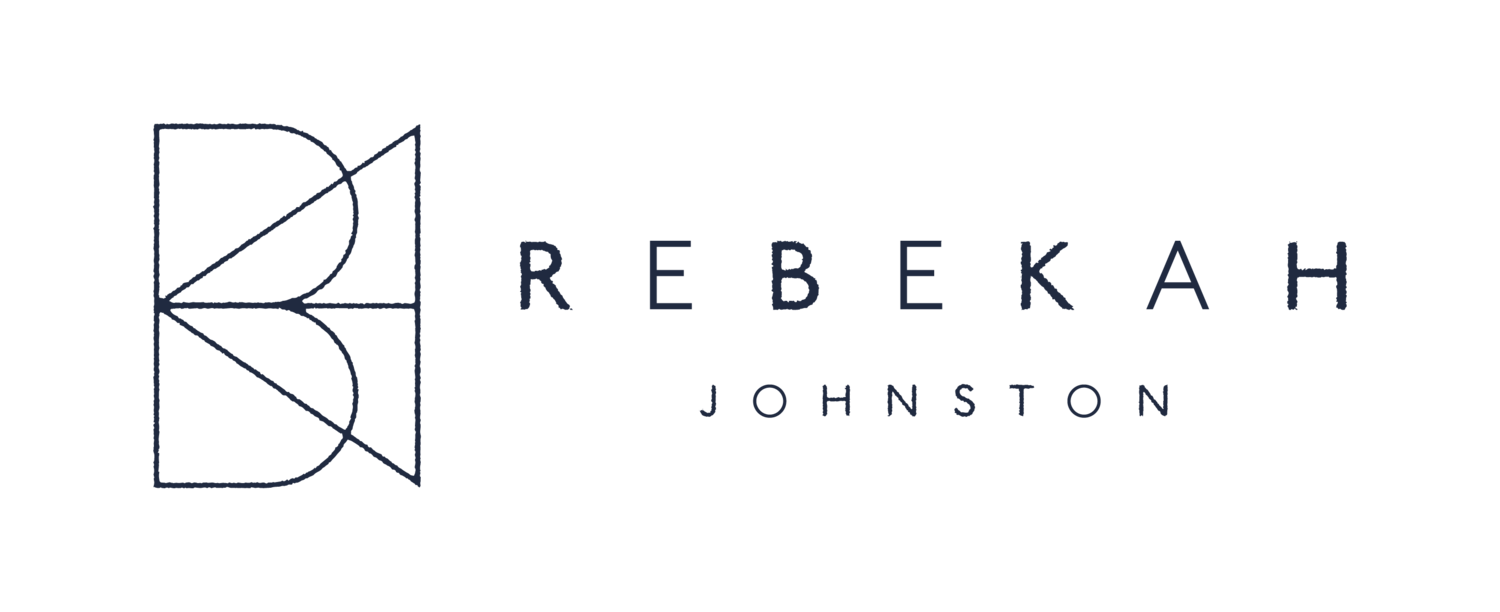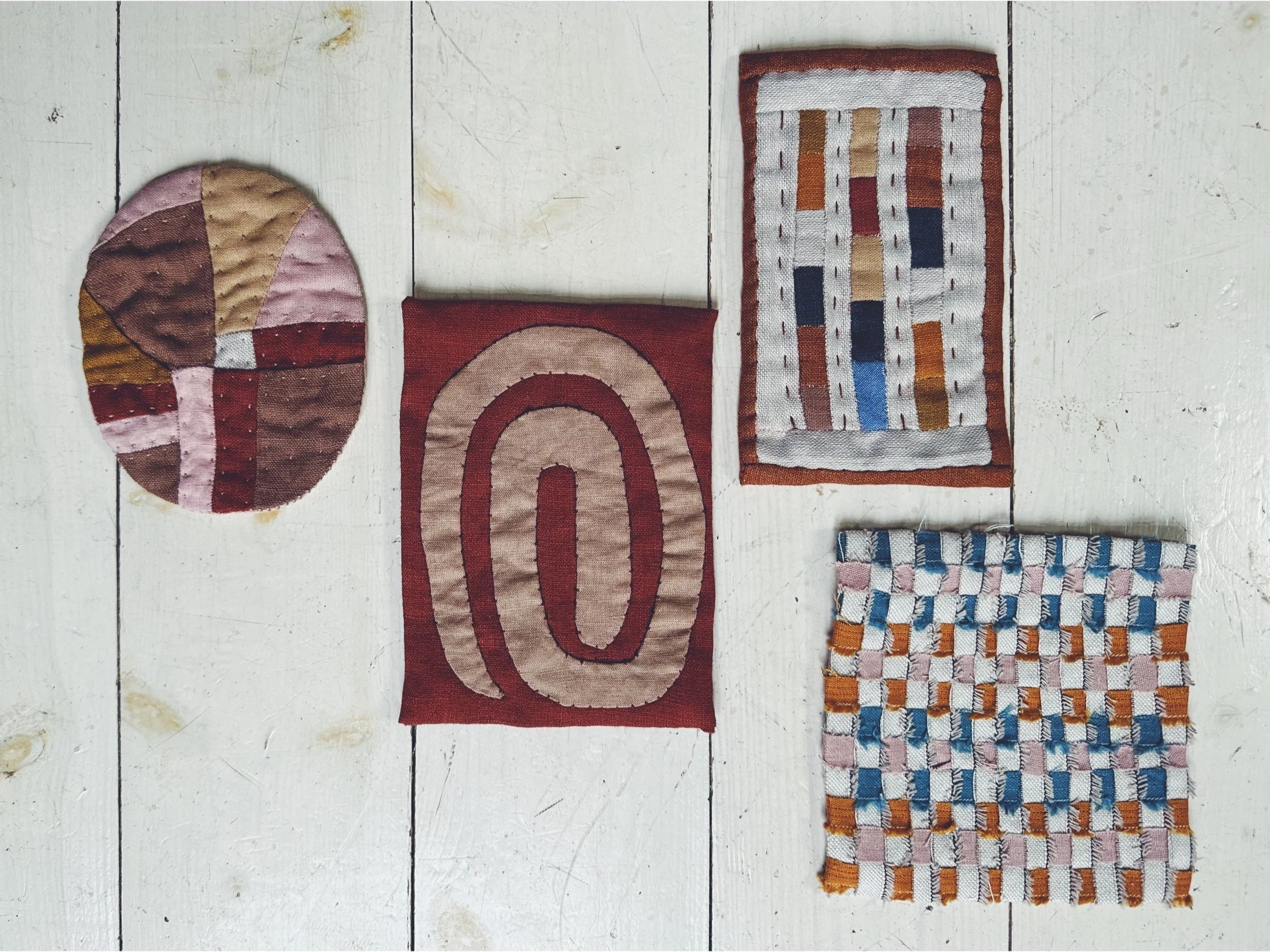Unblocking Your Creative Flow: Strategies for Textile Artists
Creative block can strike anyone, and as a textile artist, it can be particularly frustrating. Whether you're dealing with ADHD, anxiety, or just the general ebb and flow of inspiration, finding ways to overcome these obstacles is crucial. Here are some strategies that have helped me and I hope they help you get back into your creative groove.
Sewing as a Mindful Practice
There's something magical that happens when your hands are busy creating. Small, repetitive movements can be incredibly soothing, helping to focus your mind and reduce anxiety. This state of being "mindlessly mindful" can make sewing a perfect activity for mental well-being. Embrace this meditative aspect of your craft, allowing it to bring you calm and clarity.
I find the rhythm of the running stitch really calming when my mind is busy. Here is an unfinished example of what I like to sew in those moments.
Let Go of Perfectionism
Perfectionism can be a significant barrier to creativity. Embrace the "wonky" and imperfect aspects of your work. Instead of fighting against yourself, go with the flow and allow your projects to be a reflection of your current state. This mindset shift can free you from the paralysis of perfectionism and encourage more spontaneous and joyful creativity.
Embrace Your Cycles and Be Kind to Yourself
Understanding your personal cycles and being gentle with yourself is essential. Recognise the times when you might feel clumsy, forgetful, or irritable, and adjust your projects accordingly. On these days, opt for simpler, smaller tasks like hand sewing instead of machine work. Engaging in slow stitching can be therapeutic and fulfilling without the pressure of a large project. You could extend this act of self care to mending a garment or adding a stitched motif to an item of clothing.
Scale Down Your Projects
Large projects can be overwhelming, so consider working on a smaller scale. Smaller projects are more manageable and quicker to finish, giving you a sense of accomplishment and a boost of motivation. Participating in Instagram challenges, whether daily, weekly, or monthly, can also keep you accountable and inspired. For instance, committing to create a mini quilt each week can push you to try new techniques and ideas, potentially leading to larger works in the future. I struggled for much of 2023 with larger works and commissions I just could NOT get going. Committing to making a mini quilt a week, even though I didn’t complete the whole year, really freed me up. There was no pressure for it to be perfect, I tried new ideas and techniques in each one and it gave me at least one bit of content a week to post about on instagram. Some of those smaller pieces went onto inspire larger works.
Mini quilts completed in the month of February 2023 as part of instagram challenge #52miniquilts.
Prepare Ahead to Remove Obstacles
One of the biggest barriers to starting a project is the preparation. When I’m having an off day, the last thing I want to do is accurate cutting and measuring. By having fabrics pre-cut and ready to go, you can remove some of the initial obstacles. This foresight allows you to dive right into the creative process without the hassle of choosing colours or cutting materials. Think of it as a gift from your past self to your future self, making it easier to get started when inspiration strikes. I have zippy bags of fabric squares in colours that work well together as well as scraps and offcuts that I group by colour or size. These might be used for a small mini quilt or pieced together at a later date as a patchwork, it doesn’t matter - the difficult decisions are already made so I can go ahead and create without thinking too much about it.
Pre-cut linen fabric squares in a manageable size. They are plant dyed so I know the colours will always sit well together.
Create Boundaries When Working from Home
Working from home has its perks, but it can also blur the lines between work and personal life. Seeing piles of fabric and unfinished projects can be stifling . Create a designated workspace that you can leave at the end of the day. This separation can help you maintain a healthier work-life balance and reduce feelings of being overwhelmed. I’m still working on this one!
Take a Break and Get Inspired
Sometimes, the best way to overcome a creative block is to step away from your current work. Try a new class or workshop, even if it's not directly related to textiles. Exploring different media and crafts can provide fresh perspectives and inspire new ideas. This break can be the catalyst you need to return to your textile projects with renewed enthusiasm.
to sum up
Creating something with your hands is inherently good for your mental health and well-being, but starting can often be the hardest part. By preparing ahead, embracing your natural cycles, letting go of perfectionism, and trying new things, you can overcome creative blocks and find joy in your textile art once again. Remember, every stitch is a step towards a more creative and fulfilling practice. And if you have an urge to create and you’re not sure where to begin, take a look at some of my video tutorials. They might be just the boost you need to get back your creative flow.




